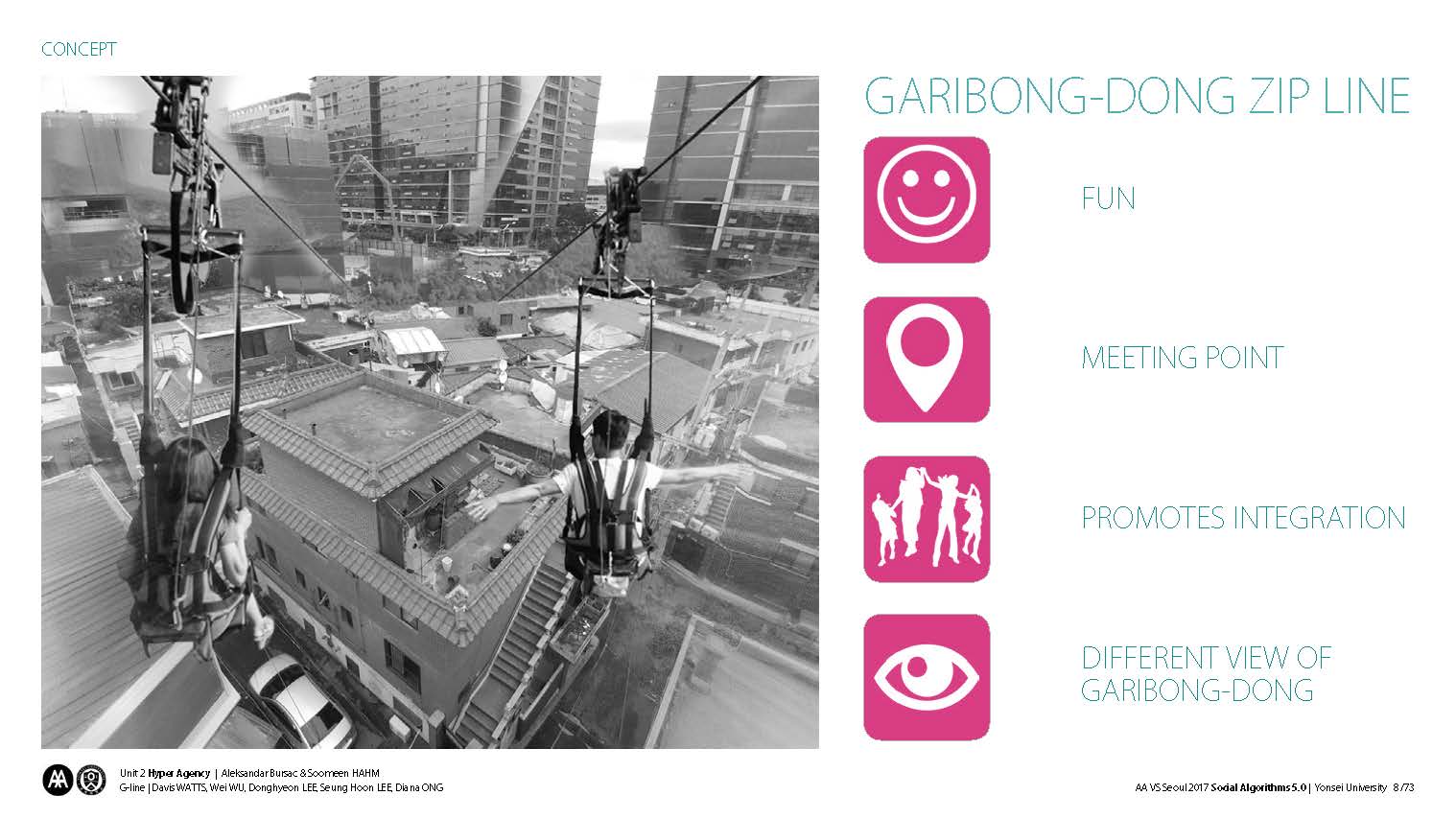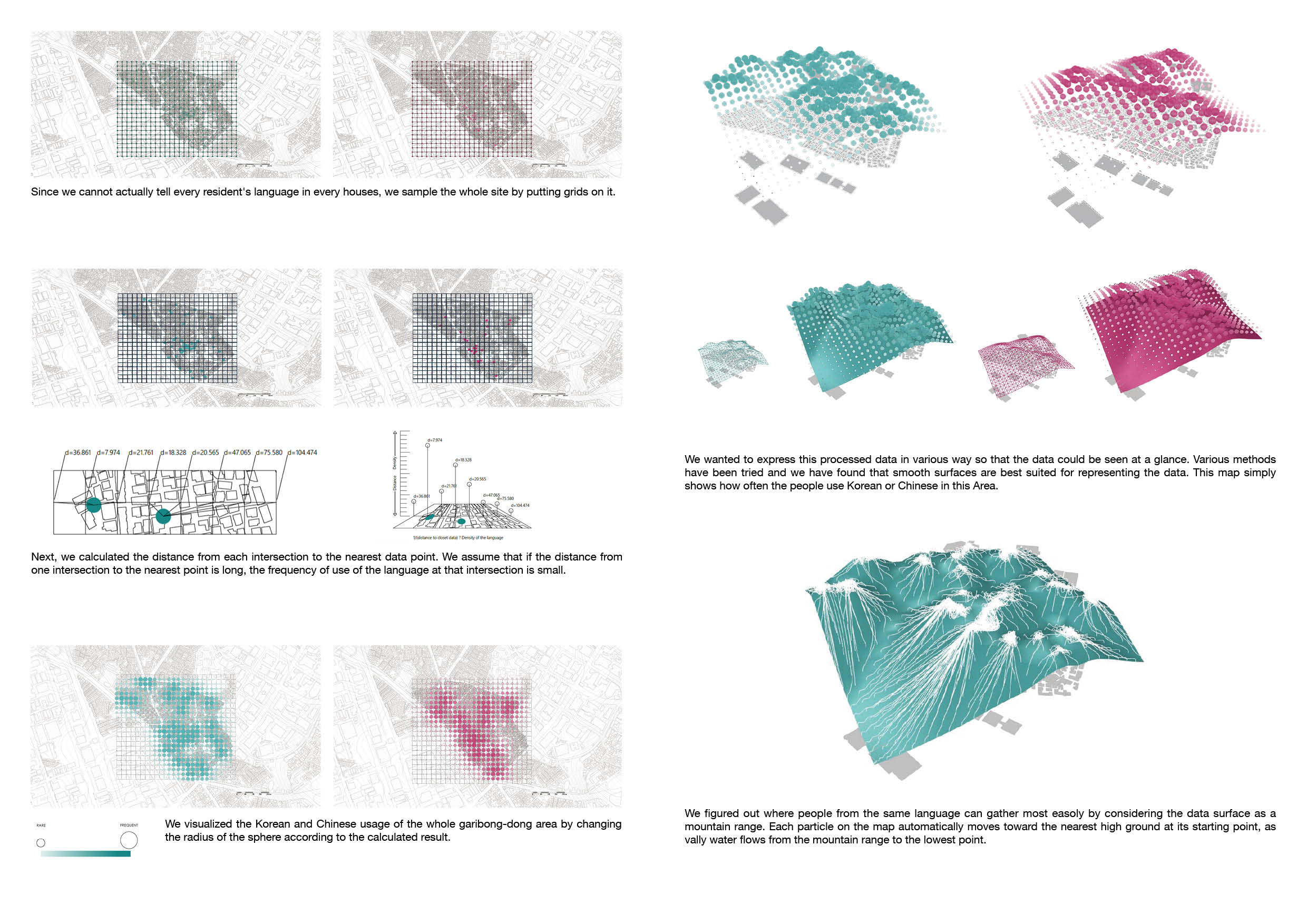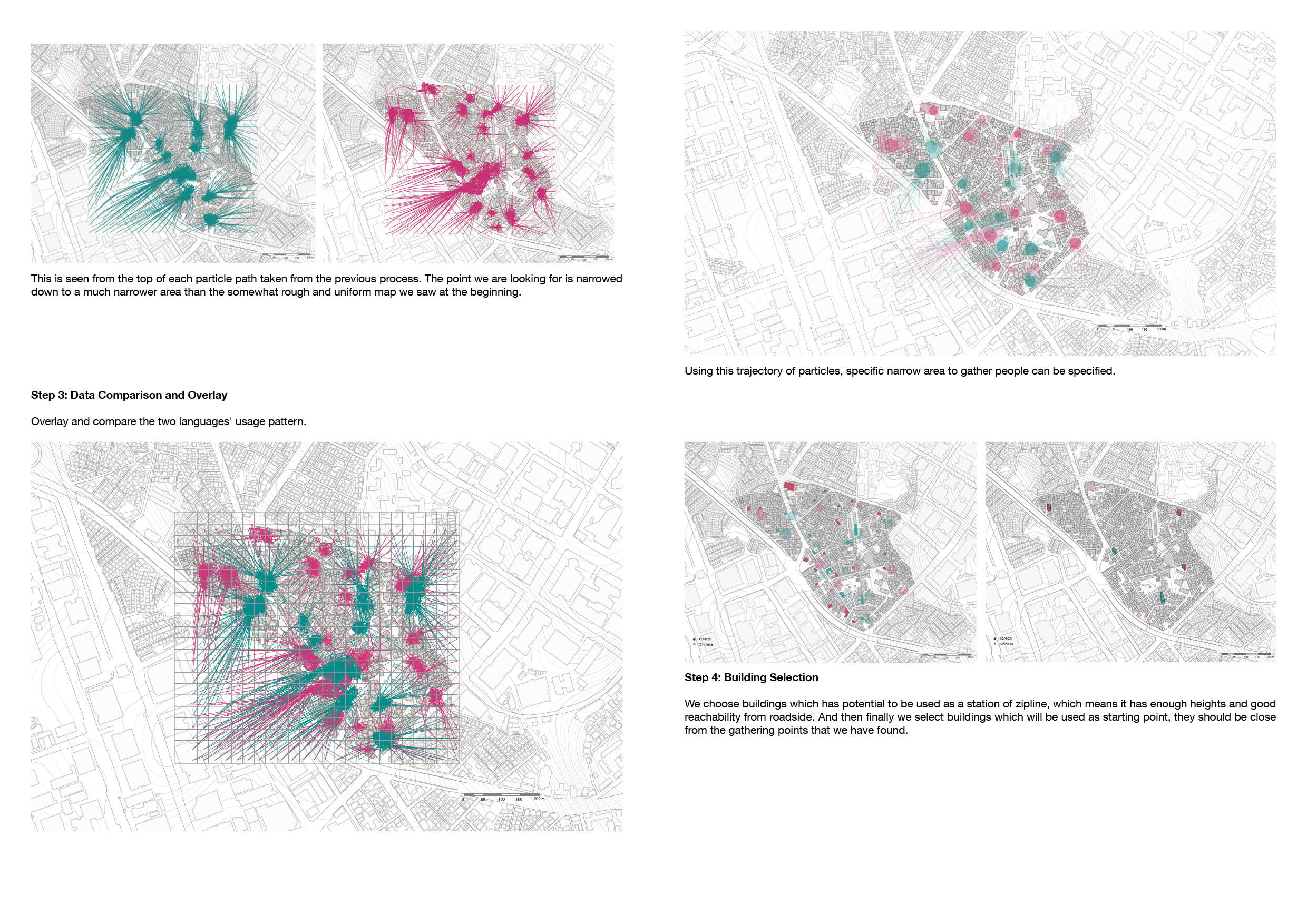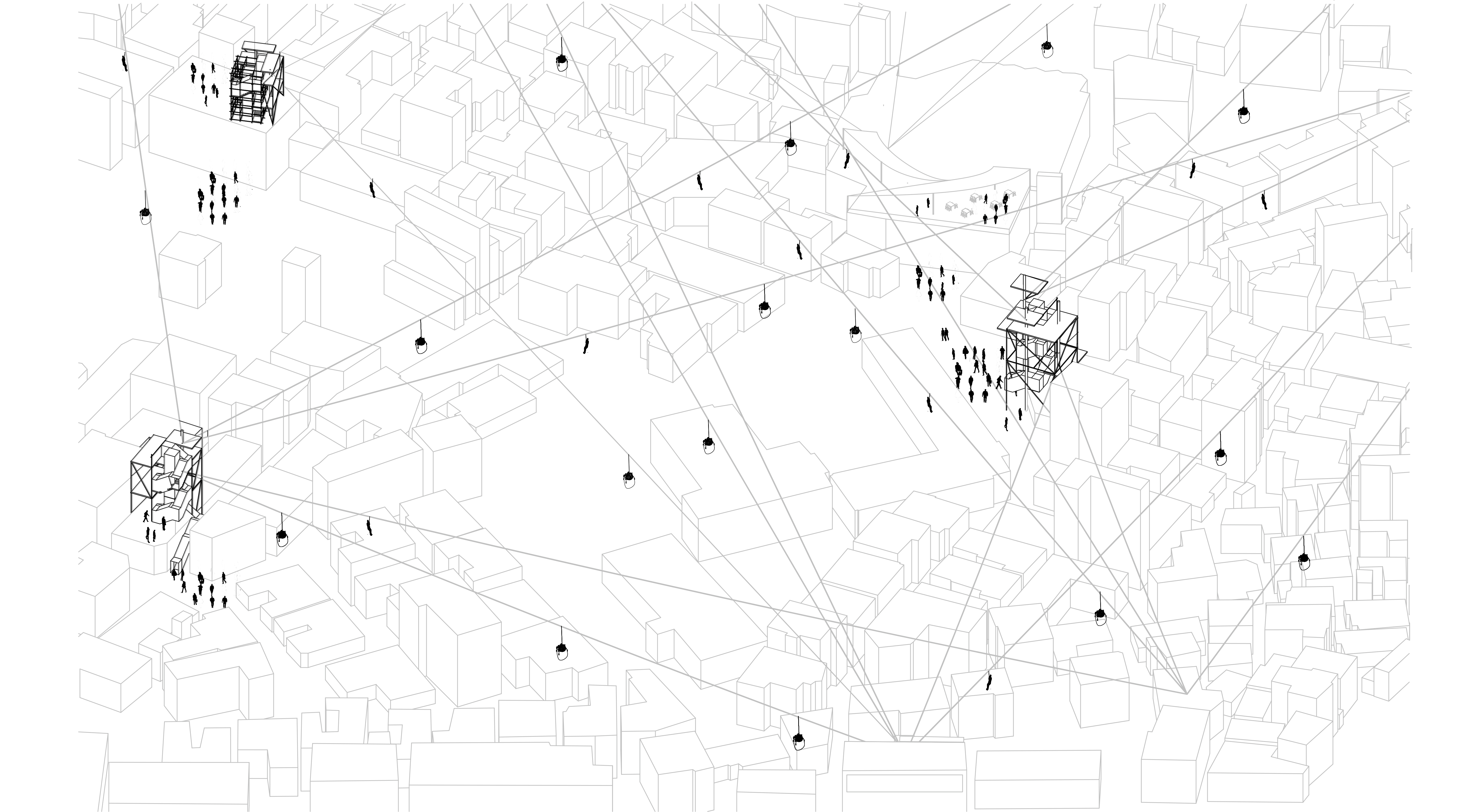Garibong-dong area in Korea has severe societal issues: the aging population, lack of public space and residence, etc. What's more, the Korean Chinese and Korean residents speak different languages, which was a barrier leading to conflicts and arguments. By analyzing the Korean search engine Naver and the Chinese one called Baidu, focusing on the language and meanings of the street signs, we have the statistics and model of how Korean Chinese and Korean people distribute in this area. Then a new high-altitude zipline strategy is proposed to solve various local disputes. By connecting the roof platform to create public space, activate the community, and create a systematic zipline for tourist attractions based on community features.
More on
https://issuu.com/wei_wu/docs/aa_seoul_unit2_g-line
More on
https://issuu.com/wei_wu/docs/aa_seoul_unit2_g-line
G-LINE
The Zipline System Design based on Data Analysis
Urban DesignCollabrator: Donghyeon Lee, Seunghoon Lee, Diana Ong
Instructor: Soomeen Hahm, Aleksandar Bursac
Role: Proposed the main strategy for analyzing street data using local maps on searching engine, data visualization using Grasshopper, concept drawing and zipline add-on structure design.
Toolkits: Site Analysis, User Research, Data Visualization, Grasshopper, Rhino, Unity
Workshop: AA visiting school at Yonsei University - Social Algorithms Unit 2 Hyper Agency
Year: 2017















